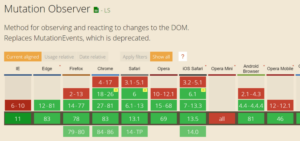How to Hire and Onboard Employees

Hiring and onboarding employees effectively is critical for building a talented workforce, fostering employee engagement, and ensuring organizational success. A well-executed hiring and onboarding process not only attracts top talent but also sets the stage for new employees to integrate smoothly into the company culture, understand their roles, and contribute to business goals from day one. This comprehensive guide will outline essential steps, best practices, and strategies to help you hire and onboard employees successfully.
Importance of Hiring and Onboarding
Hiring and onboarding processes are pivotal for several reasons:
- Attracting Talent: A well-defined hiring process attracts skilled candidates who align with the company’s values, culture, and job requirements.
- Retention: Effective onboarding programs improve employee retention rates by facilitating early engagement, connection to the organization, and job satisfaction.
- Productivity: Smooth onboarding enhances new hires’ productivity and time to competency, enabling them to contribute to business objectives more quickly.
- Brand Image: A positive hiring and onboarding experience enhances the employer brand, attracting future candidates and promoting a positive organizational reputation.
- Compliance: Ensuring compliance with legal and regulatory requirements throughout the hiring and onboarding process mitigates risks and liabilities for the organization.
Key Steps to Hire and Onboard Employees
1. Define Job Requirements and Recruitment Strategy
- Job Analysis: Conduct a thorough job analysis to define roles, responsibilities, skills, qualifications, and key performance indicators (KPIs) for the position.
- Recruitment Plan: Develop a recruitment strategy outlining sourcing channels, candidate selection criteria, interview processes, and timelines aligned with organizational needs.
2. Attract and Assess Candidates
- Job Posting: Create compelling job postings that highlight the company culture, benefits, career opportunities, and key job responsibilities to attract qualified candidates.
- Screening and Selection: Review resumes, conduct initial screenings, and use assessments (e.g., interviews, skills tests, psychometric assessments) to evaluate candidates’ qualifications, fit, and potential.
3. Conduct Interviews and Select Candidates
- Interview Preparation: Prepare interview questions tailored to assess candidates’ skills, experience, cultural fit, and alignment with organizational values.
- Interview Process: Conduct structured interviews, including panel interviews, behavioral interviews, and technical assessments, to evaluate candidates thoroughly and gather diverse perspectives.
4. Extend Job Offers and Negotiate Terms
- Offer Letter: Prepare and communicate formal job offers detailing compensation, benefits, job title, start date, and any contingencies or conditions of employment.
- Negotiation: Facilitate negotiations on salary, benefits, work arrangements, and other terms to reach mutually satisfactory agreements with selected candidates.
5. Prepare for Onboarding
- Onboarding Plan: Develop a comprehensive onboarding plan outlining activities, milestones, and resources to acclimate new hires to the organization and their roles.
- Welcome Communication: Send welcome emails or letters, introduce new hires to their team members, and provide pre-boarding materials (e.g., company policies, benefits information) before their start date.
6. Facilitate Onboarding Process
- Orientation: Conduct orientation sessions to familiarize new hires with the company mission, values, culture, organizational structure, policies, and workplace norms.
- Training and Development: Provide job-specific training, skills development programs, and mentorship opportunities to support new hires’ learning and professional growth.
7. Monitor Progress and Support Integration
- Feedback and Support: Schedule regular check-ins, provide constructive feedback, and offer support to address new hires’ questions, challenges, and adjustment to the new role and environment.
- Performance Expectations: Set clear performance expectations, goals, and milestones for new hires, aligning objectives with departmental and organizational priorities.
Best Practices for Hiring and Onboarding Employees
- Streamline Processes: Use applicant tracking systems (ATS), HR software, or recruitment platforms to automate and streamline hiring processes, improve efficiency, and enhance candidate experience.
- Personalize Onboarding: Customize onboarding experiences based on new hires’ roles, backgrounds, and learning preferences to promote engagement and retention.
- Integrate Technology: Utilize technology for virtual onboarding, e-learning modules, video conferencing, and digital documentation to accommodate remote or distributed workforces.
- Engage Stakeholders: Involve hiring managers, team members, HR professionals, and executive leadership in the onboarding process to ensure alignment, support, and collaborative integration efforts.
- Evaluate and Improve: Gather feedback from new hires and stakeholders, conduct post-onboarding surveys, and analyze retention rates and performance metrics to refine and enhance hiring and onboarding practices.
Conclusion
Hiring and onboarding employees effectively requires careful planning, strategic execution, and continuous improvement to attract, select, integrate, and retain top talent. By defining job requirements, attracting qualified candidates, conducting thorough interviews, extending job offers, preparing comprehensive onboarding plans, facilitating integration, and monitoring progress, organizations can create positive experiences for new hires and set the foundation for long-term success and employee engagement. Investing in robust hiring and onboarding practices not only strengthens organizational capabilities but also enhances employee satisfaction, productivity, and contribution to business growth in today’s competitive and dynamic marketplace.




